Italy is a Roman Catholic country. In every city and even in every smallest town there are well-groomed Catholic churches. Many Italians regularly attend Sunday masses, accustoming younger generations to such tradition as well. In schools and kindergartens kids have weekly classes on religion. The church closely interacts with parishioners and their families. Joint family dinners are arranged, where people meet and communicate in an amicable environment.
Virgin Mary is particularly worshipped in this land. Chapels with Her statues are placed in many ordinary yards of dwelling houses, kindergartens and schools, as well as at street crossings. Inside nearly every house there is Her image or figurine.
Many churches in Italy, including the globally famous basilicas (most important and revered churches and cathedrals) are named in Virgin Mary’s honour, e.g. Basilica of Saint Mary Major (Basilica di Santa Maria Maggiore) – the Papal major basilica and the largest Catholic Marian church in Rome; Basilica of Saint Mary of Health (Basilica di Santa Maria della Salute) built in Venice as a votive offering for the city's deliverance from pestilence; Cathedral of Saint Mary of the Flowers (Basilica Cattedrale Metropolitana di Santa Maria del Fiore) located in Piazza del Duomo (the Cathedral Square) of Florence; the majestic Basilica of Our Lady Help of Christians (Basilica di Santa Maria Ausiliatrice) in Turin; Metropolitan Cathedral-Basilica of the Nativity of Saint Mary (Basilica cattedrale metropolitana di Santa Maria Nascente) – one of the principal attractions and the “trademark” of Milan...
One or several times in their life Italians, mostly of elder generations, undertake pilgrimage to the most famous places of Marian apparitions, such as Lourdes, Fatima and Medjugorje...
Here we will talk about a small church – Santuario di Santa Maria аlla Fontana – located in a picturesque valley at the edge of the town of Locate di Triulzi to the south of Milan.
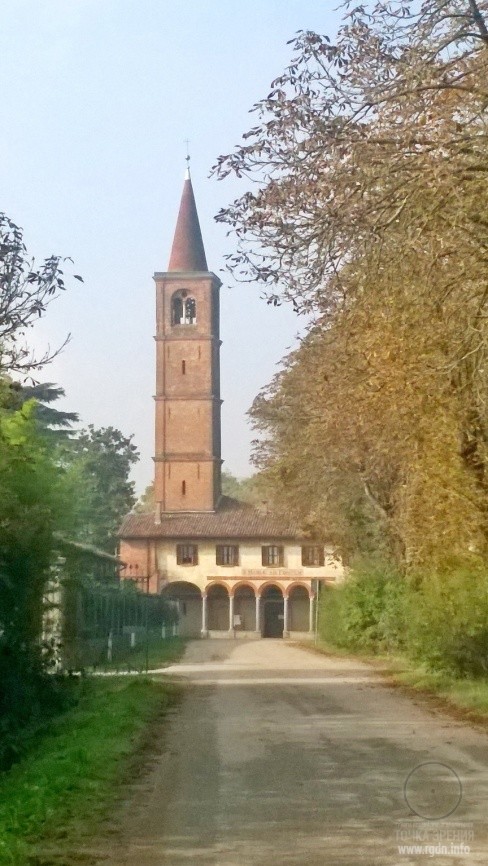
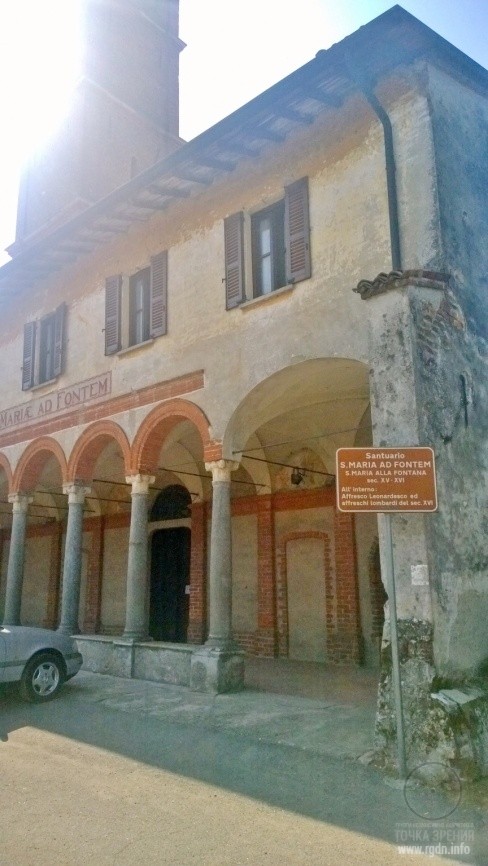
According to a local legend, in the 13th century the Holy Mother of God appeared to a peasant who was working in the field and asked to build a church in that place. After the apparition a spring welled out of the ground, and a chapel dedicated to Virgin Mary was constructed above it. The spring has wonder-working properties, owing to which the chapel turned into a famous sanctuary where lots of pilgrims and sick people come for ablution.
Since the 14th century, a major part of this area belonged to the famous Milanese family Trivulzio. In 1470 they extended the building and attached a church above the original sanctuary, where up to 100 people could fit. Circa in 1530 the new Upper Church was built for over 200 people. Hence, nowadays the sanctuary consists of three churches built one above the other and a tall bell tower. Believers from all over Italy keep coming to this marvellous place. Many say they feel Virgin Mary’s presence there: “Having come to this wonderful place for the first time, I felt deep inner peace. Being here helps me to take my mind off the everyday reality and plunge into my inner world. It’s a marvellous feeling of Her presence and help, the Protecting Veil of Our Lady.”
On the lower floor, which is now almost entirely underground, there is a spring of crystal clear water streaming right from the building foundation into three little pools.
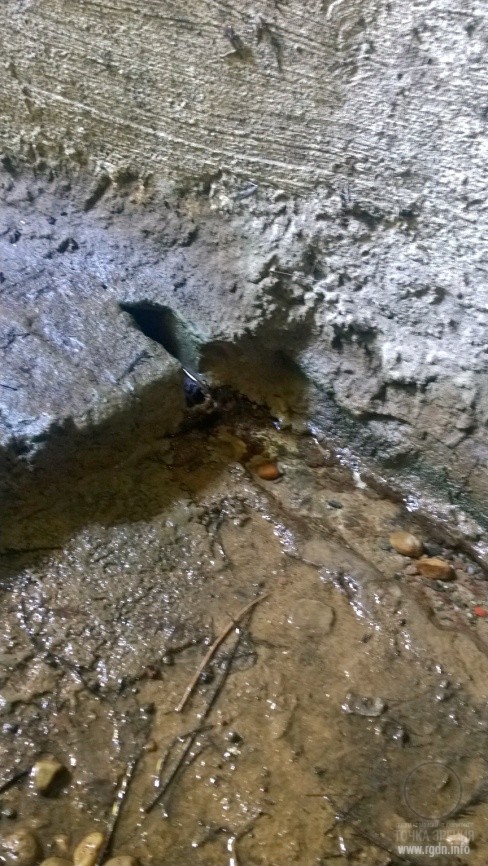
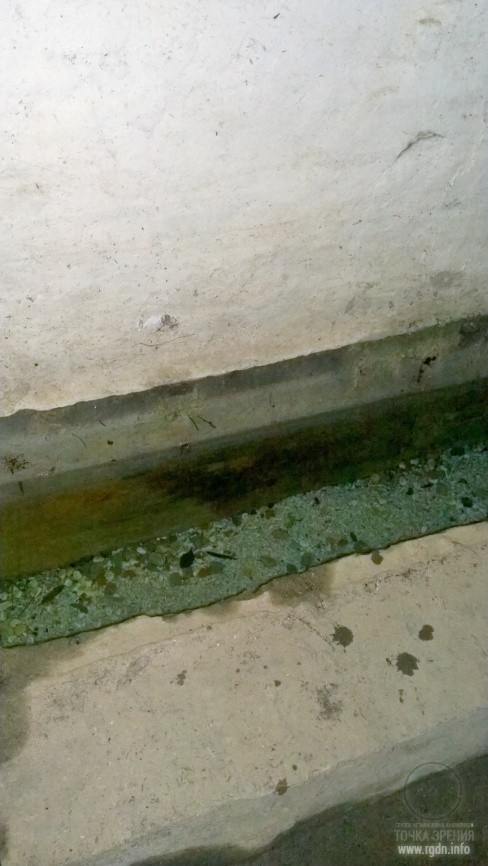
On the wall above the pools there are two severely deteriorated frescos depicting Virgin Mary.
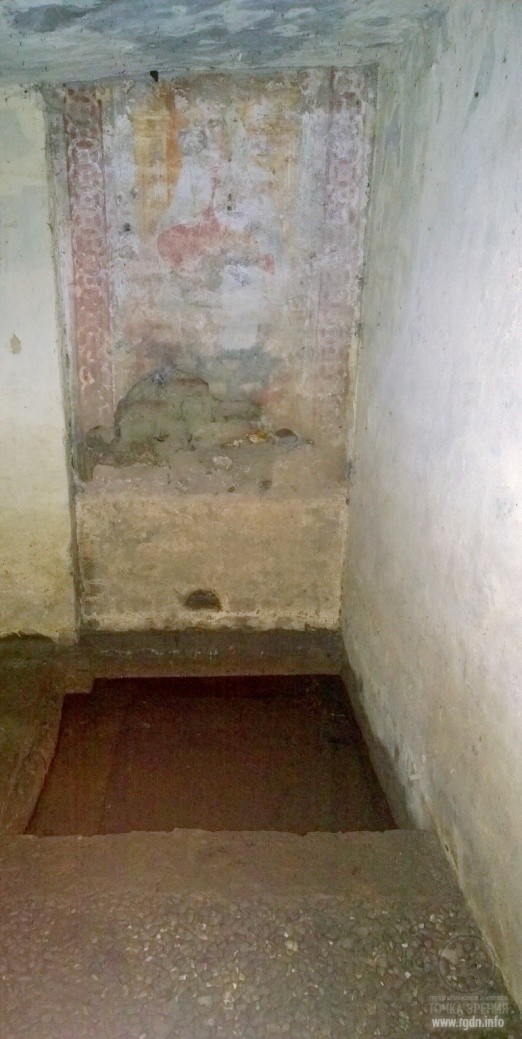
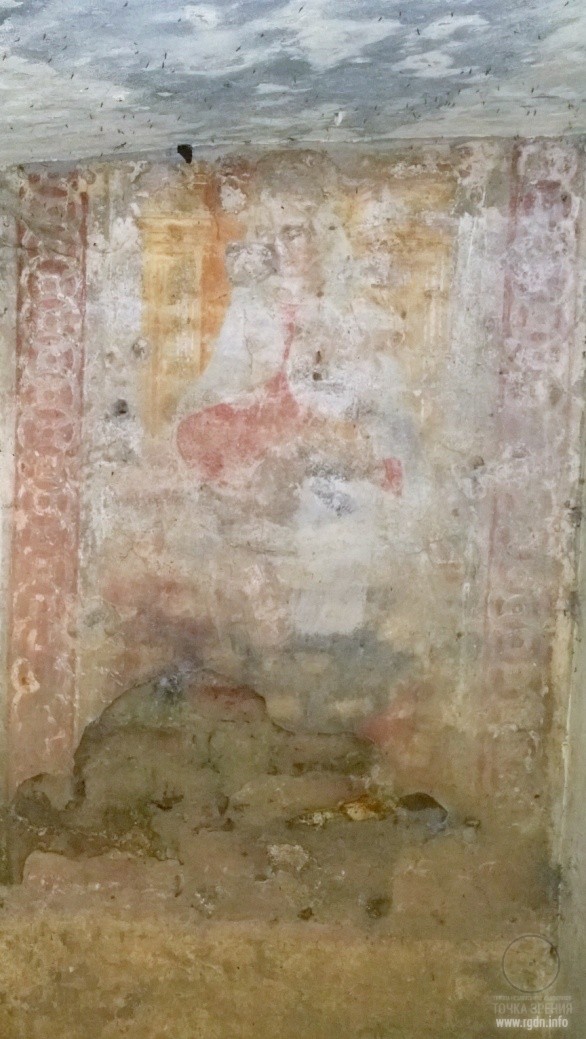
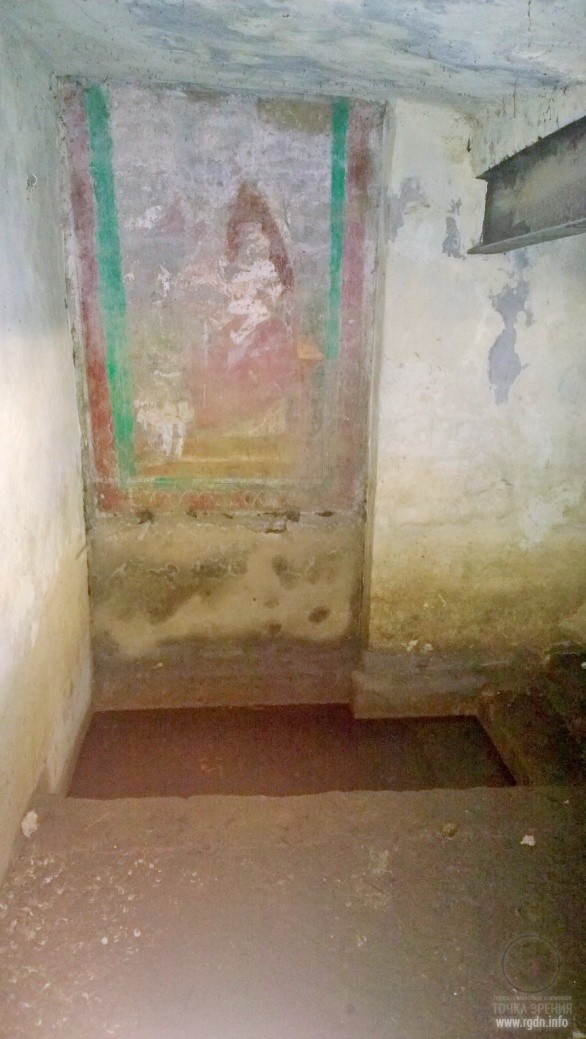
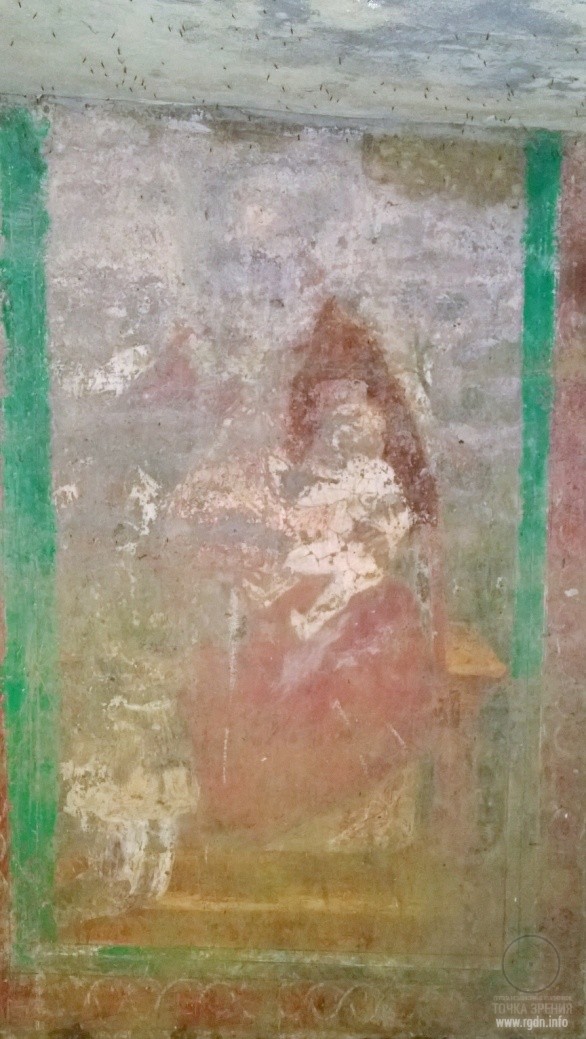
The lower church is inaccessible during the year.
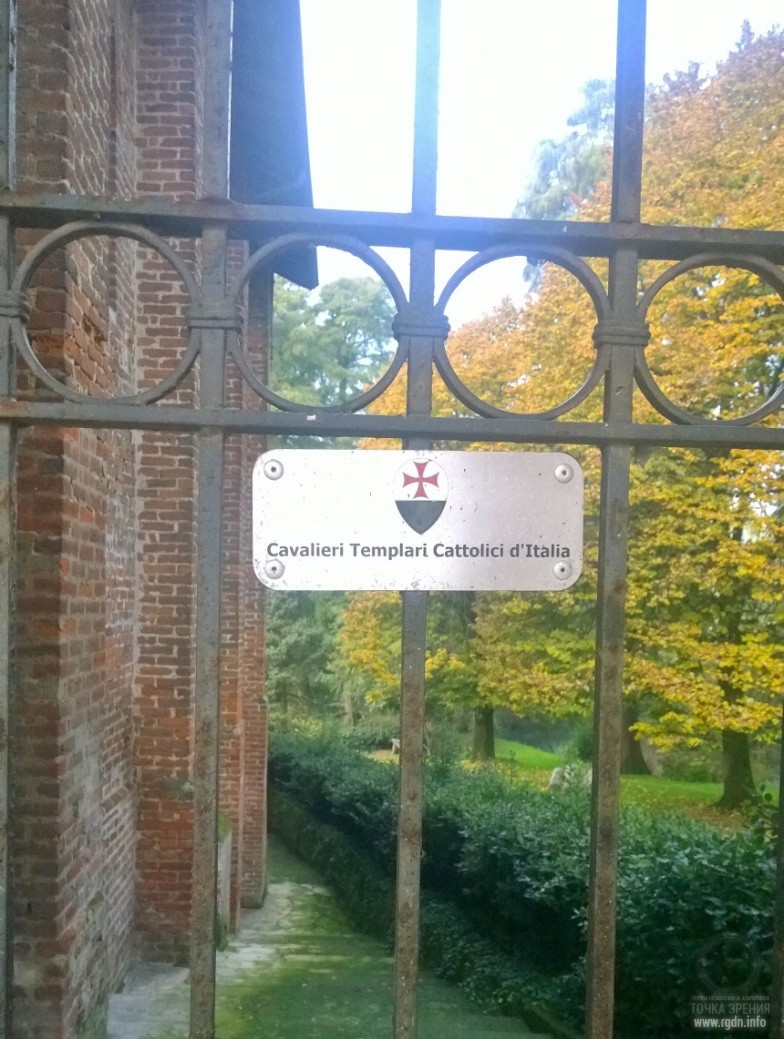
It may be attended only one day in a year – on the great Ascension Day. There are also days when the gate is open and visitors can walk down the outer stairs and get into small premises.
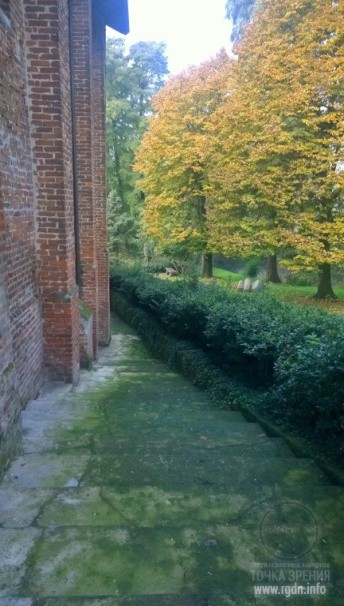
The layout of the chapel built over the water spring in the 13th century is still unknown, for its walls are hidden underground.
On the second floor of the building, in the underground church with vaulted ceiling, a fragment of a fresco with Virgin Mary and baby Christ may be viewed through a small rounded window. Most probably, the fresco belongs to the lower floor of the sanctuary.
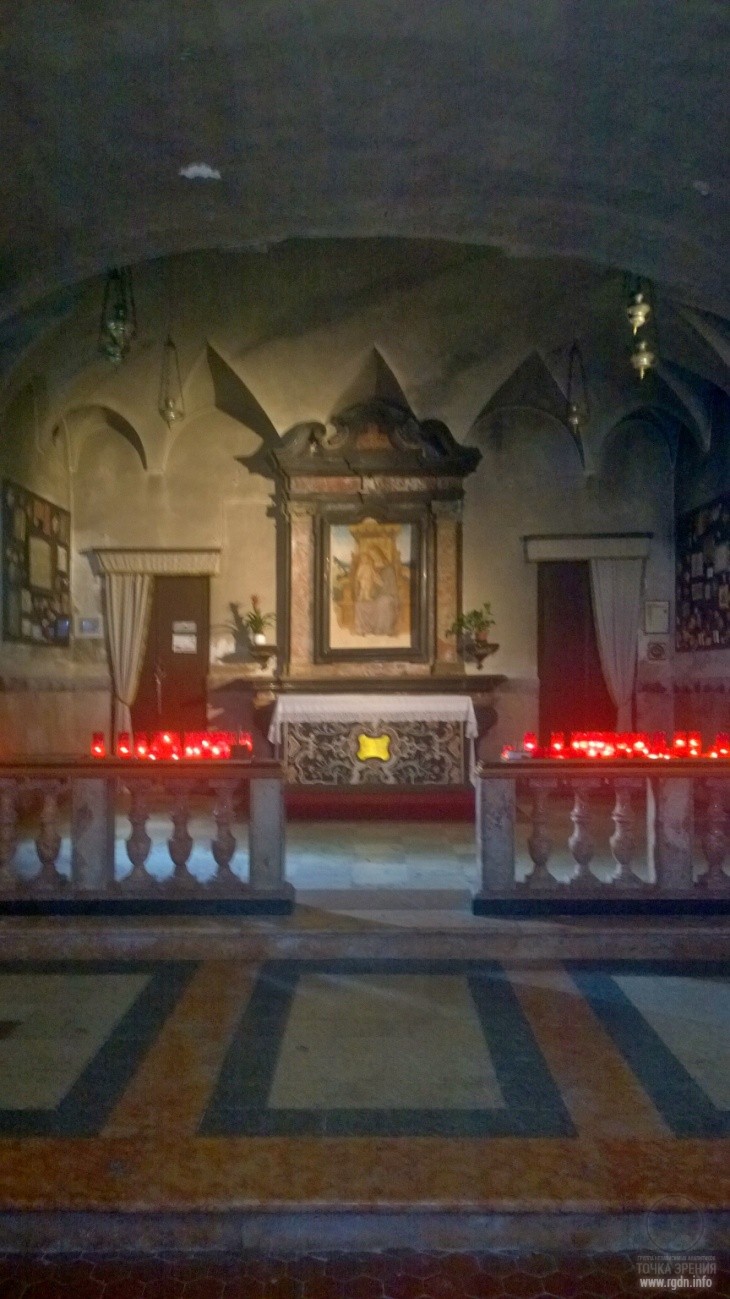
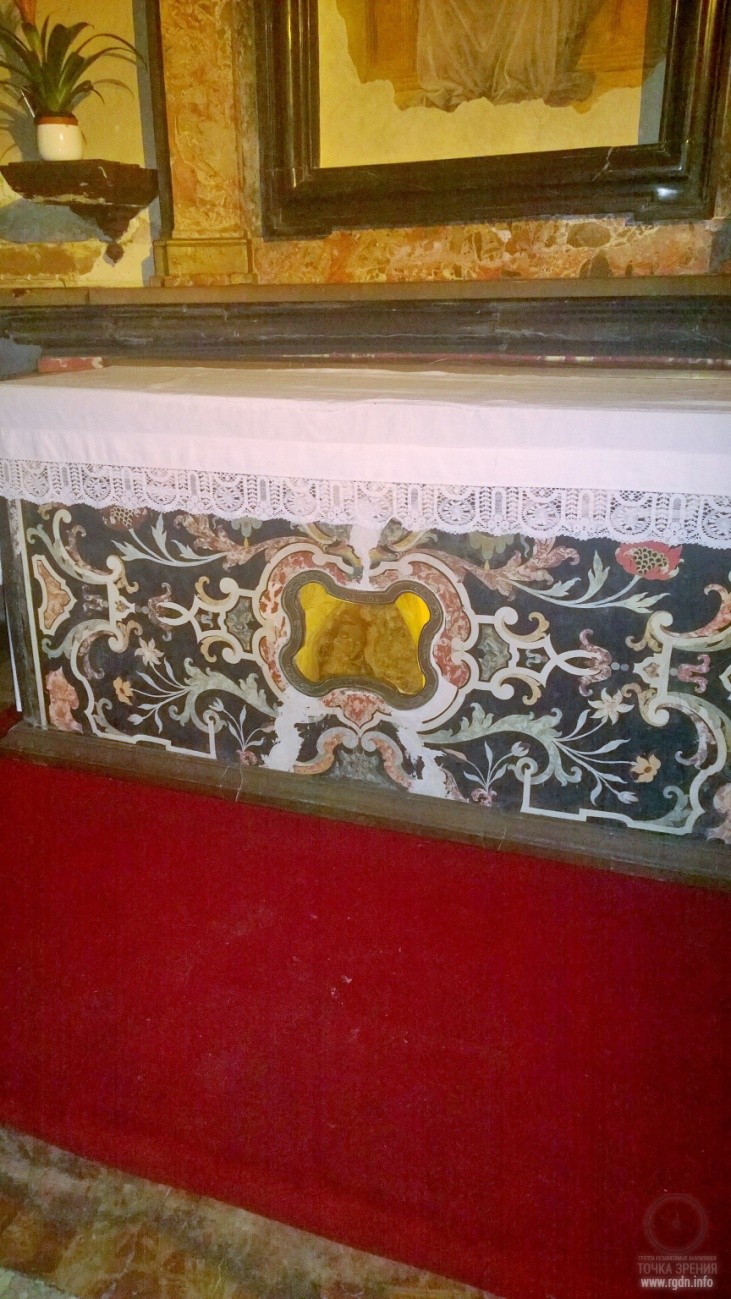
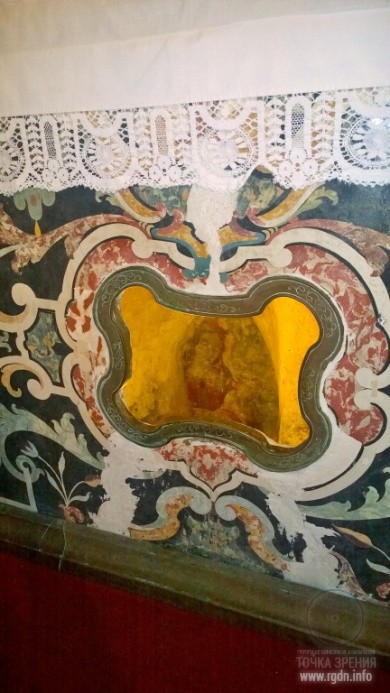
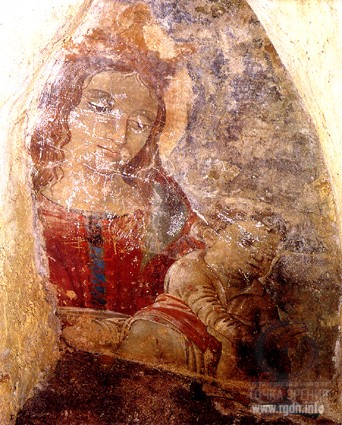
Furthermore, over the altar there is a fresco dated the 15th century and depicting Our Lady sitting with baby Christ in Her arms in front of a beautiful landscape. It is believed that Leonardo da Vinci painted Mary’s face, while the rest of the fresco was created by his disciples. The fresco was reconstructed in 1999 by restorer Francesca Cherri, the daughter of Villa Fontana owner.
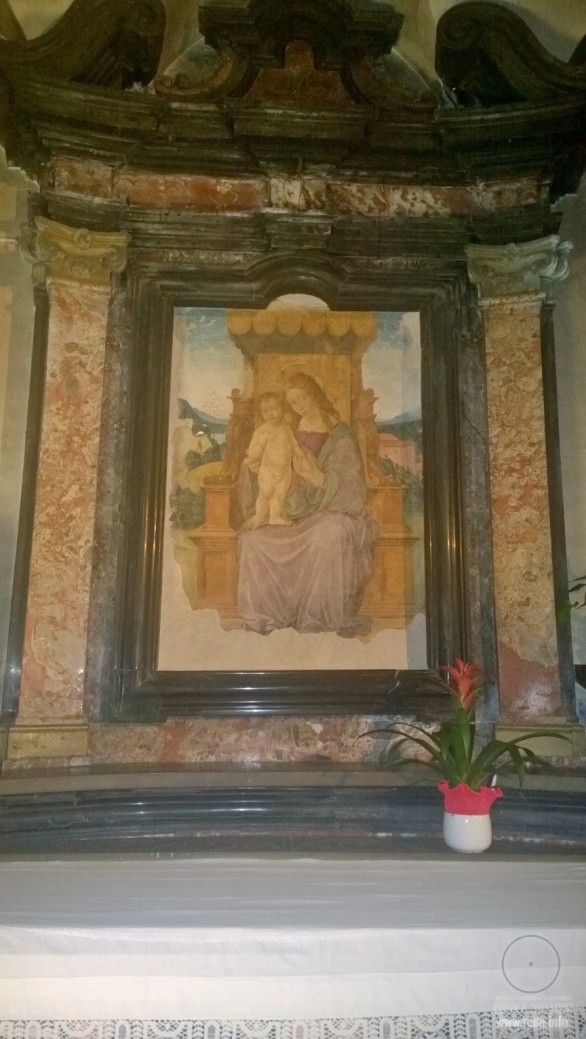
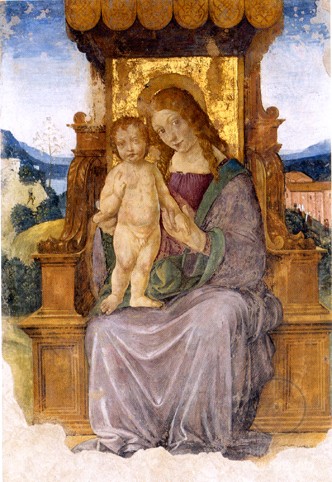
On the church walls people place embroideries made with their own hands, with simple and sincere words of gratitude to Mary for Her assistance. There are also numerous drawings and photographs.
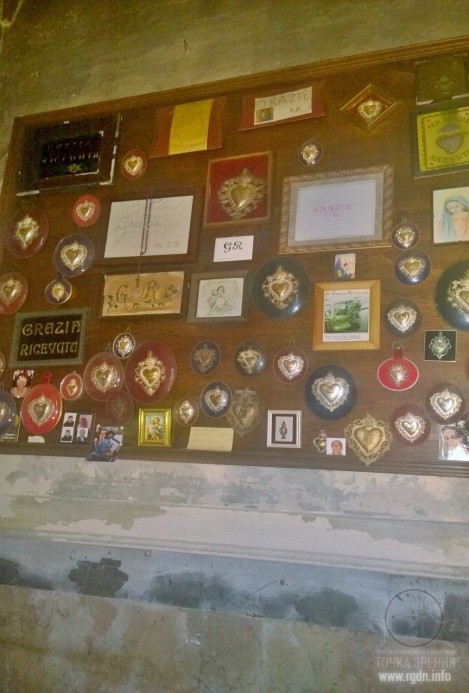
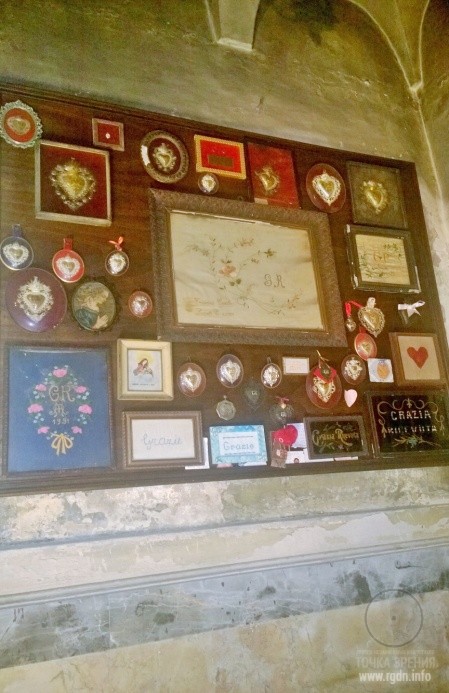
On the church upper floor, several interesting frescoes and symbols mostly erased by time or somebody’s hand still remain on the walls. Symbols and drawings are on the wooden ceiling, too.
Two floors are joined with two stairways on both sides. Walking down the stone stairs, “you experience a sensation similar to immersion into water, feel boundless peace and Her presence... The external world disappears, and you get into the other, indescribable inner world, where the sense of time and space fades away...”
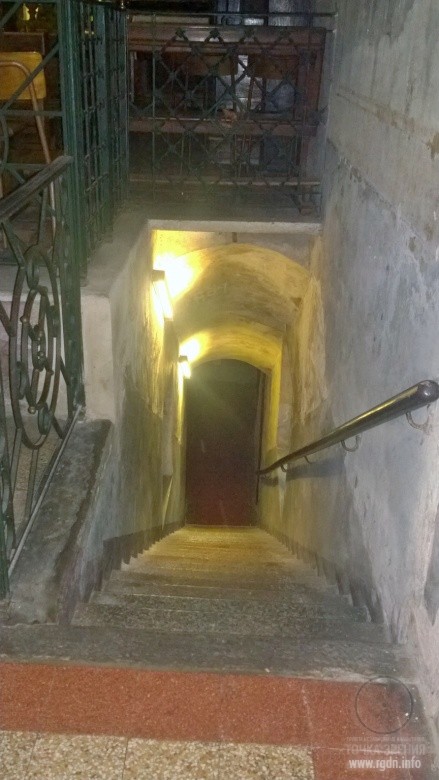
Santuario di Santa Maria аlla Fontana is open for everybody. Every Sunday, a divine service takes place in the Upper Church. However, the old sacred site is not very famous even in Italy and is not paid proper attention to, so it’s gradually falling into decay. It is difficult to say when restoration and repair took place here for the last time. Only the word of mouth does its job, and the flow of visitors never ends. As if by intuition, having visited this place once, many people come here again and again. The sanctuary can surely claim to be more widely known as a site of longstanding worship of the Blessed Virgin Mary.
In the video below there are marvellous images of the sanctuary:
Prepared by Alla Moskalenko & Ludmila Shevchenko (Milan, Italy)
Edited by Angela Sukhareva (Chernovtsy, Ukraine)
 Our Lady’s spiritual help through the centuries... Santa Maria аlla Fontana
votes:
127
Our Lady’s spiritual help through the centuries... Santa Maria аlla Fontana
votes:
127
|

Project Aim










Leave comment